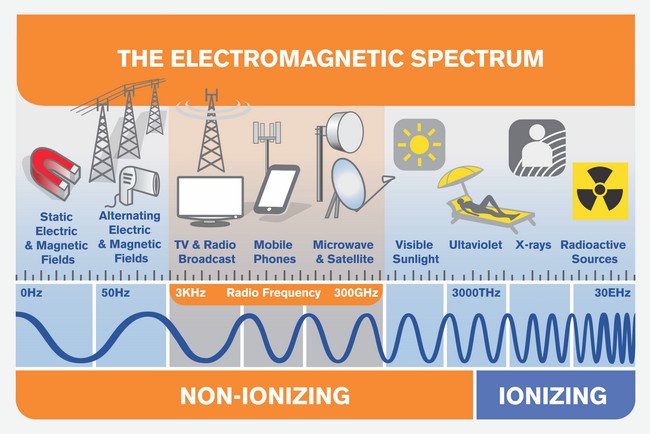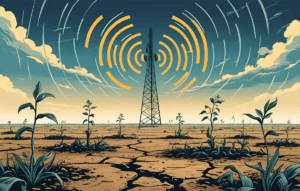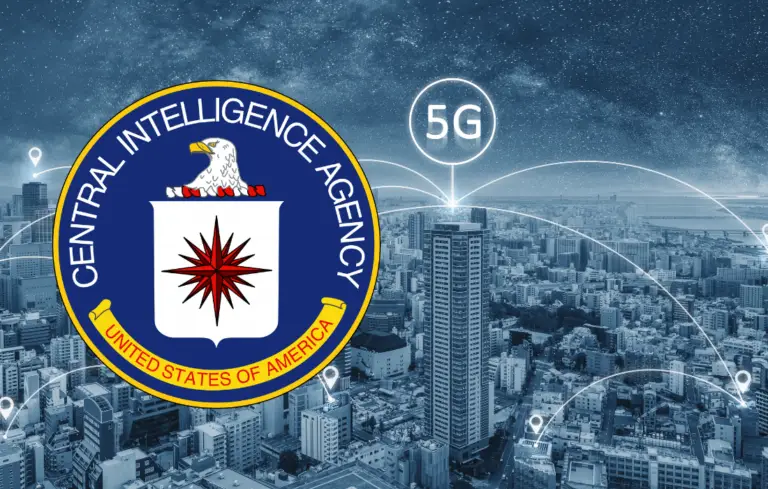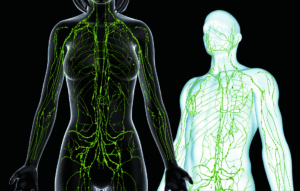Electromagnetic fields (EMFs) are an invisible force that has become a ubiquitous part of modern life. From the devices we hold in our hands to the Wi-Fi signals that surround us, EMFs have infiltrated our homes, workplaces, and even the spaces where we seek rest. While their convenience and utility are undeniable, the impact of EMFs on mental health is a topic that deserves closer attention.
Let’s explore how EMFs could be silently affecting your mental well-being, what the science says, and how you can take proactive steps to mitigate their effects.
Understanding EMFs: What Are They?
Electromagnetic fields (EMFs) are areas of energy that are emitted by electrically charged objects. EMFs occur naturally, such as in the Earth’s magnetic field, but the majority of our exposure today comes from man-made sources.
Types of EMFs Based on Frequency and Energy Levels
Non-Ionizing EMFs
Non-ionizing radiation is lower in energy and is generally considered less harmful because it lacks the energy to break chemical bonds directly. However, many studies challenge this assumption, pointing to biological effects even at low exposure levels. Examples of non-ionizing EMFs include:
AC Magnetic Fields: Emitted by power lines, household appliances, and wiring errors.
Radio Frequency (RF) Fields: Generated by cell phones, Wi-Fi routers, Bluetooth devices, and 5G networks.
AC Electric Fields: Produced by energized electrical circuits and installations, even when not in use.
Dirty Electricity: Created by power surges and irregularities from modern electronics and energy-efficient lighting.
Despite being classified as “safe” by regulatory bodies like the FCC, non-ionizing radiation has been linked to sleep disturbances, oxidative stress, and other health concerns.
Ionizing EMFs
Ionizing radiation is high-energy and capable of breaking chemical bonds, leading to DNA damage and serious health risks. While less common in daily life, exposure to ionizing EMFs can occur through:
X-Rays: Used in medical imaging.
Gamma Rays: Emitted by radioactive materials and certain cosmic sources.
Ionizing radiation has well-documented risks, including cancer and genetic mutations, making it a critical focus of safety regulations.
Understanding these categories and their sources can help us better assess the potential risks of EMF exposure and take steps to protect ourselves.
Some Negative Impacts of EMFs on Human Health
Extensive research has identified various ways EMFs may negatively impact human health, including:
Sleep disturbances due to reduced melatonin production
Increased cortisol levels, contributing to chronic stress and anxiety
Oxidative stress and cellular damage
Disruption of brainwave activity, leading to cognitive impairment
Weakened blood-brain barrier, allowing toxins into the brain
Potential links to neurodegenerative diseases like Alzheimer’s
Hormonal imbalances affecting mood and energy levels
Fertility issues in both men and women
Adverse effects on fetal and childhood development
By understanding the types of EMFs and their sources, as well as their potential impacts, we can better assess their risks and take steps to minimize exposure where possible.
How EMFs Affect Mental Health: A Comprehensive Look
The human body operates on delicate bioelectric signals, with the brain and nervous system playing central roles. When external EMFs interfere with these signals, the consequences can ripple through mental health in profound ways. Here is an in-depth exploration of how EMFs impact mental well-being:
1. Gut Health and the Gut-Brain Axis
EMFs have been implicated in gut health disruptions, as the gut-brain axis plays a significant role in mental well-being. The gut produces neurotransmitters like serotonin, often called the “feel-good hormone,” which regulates mood and emotional balance. Changes in gut microbiota caused by EMF exposure may contribute to increased inflammation, disrupting this neurotransmitter production and leading to anxiety, depression, and other mood disorders. Research highlights the importance of a healthy gut in buffering against these mental health challenges.
2. Heightened Stress Responses
EMFs can activate the body’s stress response by increasing cortisol levels. Cortisol, the primary stress hormone, plays a critical role in managing energy, mood, and immune function. Prolonged elevation of cortisol can lead to chronic stress, burnout, and increased vulnerability to anxiety disorders.
Moreover, EMFs contribute to oxidative stress—a biological imbalance where free radicals overwhelm the body’s natural defenses. Oxidative stress not only damages cells but also exacerbates inflammation, a known contributor to mental health issues such as depression and anxiety.
3. Blood-Brain Barrier Compromise
The blood-brain barrier (BBB) is a protective shield that prevents harmful substances from entering the brain. EMFs have been shown to weaken the BBB, allowing toxins and inflammatory molecules to infiltrate the brain. This compromise can lead to neuroinflammation, which is a significant contributor to mental health disorders such as depression, anxiety, and cognitive decline. Over time, this continuous infiltration of harmful substances can exacerbate neurodegenerative processes, increasing vulnerability to conditions like Alzheimer’s and Parkinson’s disease.
4. Cognitive Impairment and Brain Fog
Research suggests that EMF exposure disrupts the brain’s electrical activity, interfering with normal cognitive functions. Specifically, high-frequency EMFs have been found to alter brainwave patterns, particularly alpha and delta waves. Alpha waves are associated with relaxation and focus, while delta waves are critical for deep sleep and recovery.
Symptoms like brain fog, reduced attention span, memory issues, and difficulty concentrating are commonly reported in individuals with prolonged EMF exposure. Some studies even suggest that chronic exposure could accelerate age-related cognitive decline and increase the risk of neurodegenerative conditions like Alzheimer’s disease.
5. Havana Syndrome and Neurological Impacts
Havana Syndrome, characterized by symptoms such as dizziness, headaches, cognitive impairments, and auditory disturbances, has been speculated to result from targeted EMF exposures. While the exact cause remains under investigation, the condition highlights the potential for EMFs to induce severe neurological and mental health issues. Some experts suggest that these exposures could disrupt cellular communication in the brain, leading to widespread neurological dysfunction. This phenomenon underscores the need for further research into EMF impacts on the nervous system and mental health.
6. Mood Disorders and Neurotransmitter Disruption
The brain relies on a delicate balance of neurotransmitters like serotonin and dopamine to regulate mood and emotional stability. EMFs have been shown to interfere with these chemical messengers, potentially contributing to mood disorders such as depression, irritability, and mood swings.
One proposed mechanism is the weakening of the blood-brain barrier, a protective shield that prevents harmful substances from entering the brain. When this barrier is compromised by EMF exposure, toxins and inflammatory molecules can infiltrate and disrupt neurotransmitter activity.
7. Sleep Disruptions and Mental Exhaustion
Sleep is foundational to mental health, and EMFs have been shown to disrupt the body’s natural ability to rest and recover. Exposure to EMFs, particularly from devices like smartphones, tablets, and routers, has been linked to reduced production of melatonin—a hormone that regulates sleep-wake cycles.
When melatonin levels drop, individuals may experience insomnia, disrupted REM cycles, and fatigue. Over time, this sleep deprivation can exacerbate anxiety, depression, and cognitive decline. Studies have found that individuals living in high-EMF environments report higher rates of chronic fatigue and mental exhaustion.
7. Real-Life Impacts and Electrohypersensitivity
Electrohypersensitivity (EHS) is a condition in which individuals experience debilitating symptoms when exposed to EMFs. While not universally recognized by medical organizations, EHS sufferers report symptoms such as chronic headaches, anxiety, depression, and even panic attacks.
For those without diagnosed EHS, subtle but significant impacts on mental health are still possible. Studies have highlighted that even low levels of exposure can lead to changes in mood, irritability, and feelings of unease.
Mitigating the Mental Health Effects of EMFs
Thankfully, there are steps you can take to minimize EMF exposure and protect your mental health.
1. Create an EMF-Free Sleep Environment
Turn off Wi-Fi routers at night.
Avoid keeping smartphones or other devices near your bed.
2. Limit Device Use
Set boundaries for screen time, especially before bed. Learn more about mental health impacts from screen time.
Avoid using AirPods and opt for wired earbuds or EMF-protected alternatives. Learn more about EMF impact from wired vs. wireless headphones.
Place laptops and tablets on a table rather than on your lap.
- Use airplane mode when carrying your smartphone in your pocket.
Minimize the use of smartwatches or fitness trackers, especially at night, as they emit EMFs and are often in constant contact with your skin. Learn more about which smartwatches are the most EMF-friendly.
3. Invest in EMF Protection Devices
Consider using scientifically backed EMF protection technology like Aires Tech devices. These tools are designed to neutralize EMFs and reduce their impact on the body, offering an extra layer of protection for your mental and physical health.
4. Grounding and Nature Exposure
Spending time in nature helps neutralize positive ions caused by EMFs. Walking barefoot on grass or soil, a practice known as grounding, can restore balance to your body’s electrical system.
5. Antioxidant-Rich Diet
Combat oxidative stress by eating foods rich in antioxidants, such as:
Blueberries
Chlorella
Spirulina
Tart cherry juice
Long-Term Strategies for EMF Awareness and Advocacy
The relationship between EMFs and mental health is still an emerging field of study, but the evidence is too significant to ignore. Raising awareness about the potential risks and advocating for safer technology practices can pave the way for better mental health outcomes in a world dominated by wireless connections.
Educating Yourself and Others
Understanding the science behind EMFs can empower you to make informed decisions. Share what you learn with family and friends to spread awareness about this often-overlooked issue.
Advocacy for Safer Technology
Support organizations and initiatives that push for stricter safety standards for EMF-emitting devices. Encourage companies to design technologies with reduced EMF emissions.
Personal Responsibility
Ultimately, protecting your mental health from EMFs starts with you. Adopt lifestyle changes, invest in protective technologies, and prioritize time in natural environments to counterbalance the effects of modern life.
By taking proactive steps to minimize EMF exposure, you can create a healthier, more balanced lifestyle for yourself and your loved ones.






















